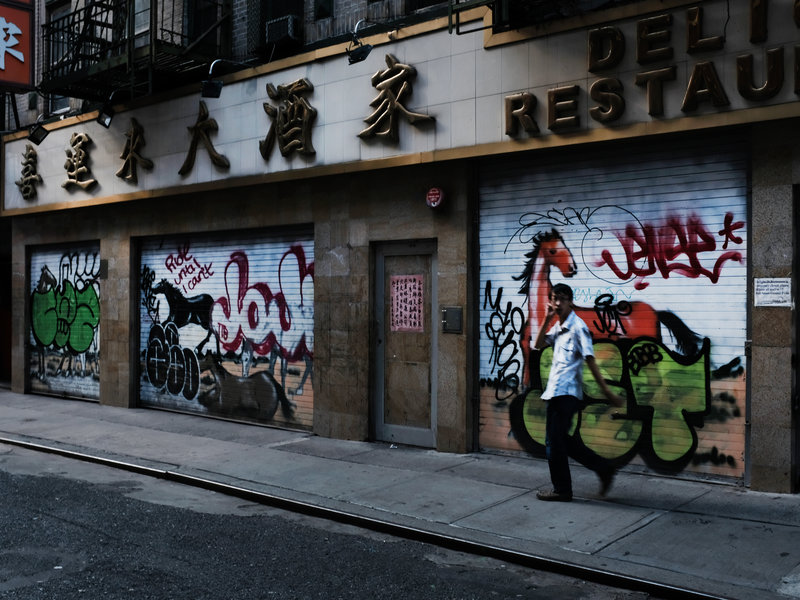Depicting Asian And Asian American Experiences: The Importance Of Authentic Storytelling

Table of Contents
The Dangers of Stereotypical Representation
Inaccurate and stereotypical portrayals of Asian and Asian Americans contribute significantly to harmful biases and misconceptions. These representations not only misinform the public but also have real-world consequences for individuals and communities.
Perpetuating Harmful Stereotypes
Common stereotypes inflict lasting damage:
- The Model Minority Myth: This harmful stereotype paints all Asian Americans as inherently intelligent, hardworking, and successful, ignoring the struggles faced by many within these communities. It creates unrealistic expectations and pits different minority groups against each other.
- The Perpetually Foreign Outsider: This stereotype casts Asian Americans as perpetual foreigners, regardless of their citizenship status or length of residency. It fuels xenophobia and discrimination.
- Hypersexualization: Asian women are often depicted as hypersexualized objects, reinforcing harmful fetishization and objectification. Asian men are frequently portrayed as asexual or emasculated.
The consequences are severe:
- Discrimination: Stereotypes fuel prejudice and discrimination in employment, education, housing, and other areas of life.
- Microaggressions: Subtle yet damaging acts of discrimination based on these stereotypes erode self-esteem and create a hostile environment.
- Limited Opportunities: Stereotypical portrayals limit opportunities for Asian and Asian American actors, writers, and directors, reinforcing the cycle of underrepresentation.
Erasure of Diversity
Monolithic representations erase the vast diversity within Asian and Asian American communities:
- Overlooked Cultures: The unique cultures and experiences of Filipinos, Vietnamese, Koreans, Indians, Chinese, Japanese, and countless other groups are often overlooked or conflated.
- Regional Differences: The significant variations in experiences within a single country, such as China or India, are rarely acknowledged.
- Individual Differences: Each individual within these communities has their own unique story, shaped by family background, personal experiences, and individual identity.
Authentic storytelling demands that we move beyond these generalizations and showcase the full spectrum of identities within these communities.
The Power of Authentic Storytelling
Authentic storytelling holds immense power to shift perceptions and foster understanding. It's about giving voice and agency to the people whose stories are being told.
Centering Diverse Voices
Prioritizing Asian and Asian American voices is crucial:
- Successful Examples: Films like "Parasite," "Minari," and "Crazy Rich Asians" (though with their own limitations) demonstrate the potential of authentic representation when diverse voices are centered.
- Diverse Creative Teams: Having Asian and Asian American writers, directors, producers, and actors involved in every stage of production ensures authenticity and avoids unintentional perpetuation of stereotypes.
Fostering Empathy and Understanding
Nuanced portrayals can challenge deeply rooted prejudices:
- Shifting Perceptions: By showcasing the full range of human experiences within Asian and Asian American communities, we can challenge harmful stereotypes and create greater empathy among audiences.
- Positive Impact: Authentic storytelling can improve inter-cultural relations and contribute to a more just and equitable society.
Promoting Accurate Historical Context
Accurate historical representation is paramount:
- Sensitive Depictions: Events like the Chinese Exclusion Act, the Japanese American internment, and the ongoing struggles for equality demand accurate and sensitive portrayals.
- Confronting Injustice: Authentic storytelling allows us to acknowledge and confront past injustices, fostering healing and promoting reconciliation.
Practical Steps Towards Authentic Representation
Achieving authentic representation requires conscious effort and collaboration.
Collaboration and Consultation
Engaging with the community is essential:
- Community Engagement: Focus groups, community consultations, and partnerships with Asian and Asian American organizations can ensure accuracy and sensitivity.
- Valuable Feedback: Feedback from community members at every stage of the process helps to prevent harmful misrepresentations.
Amplifying Marginalized Voices
We must actively seek out and amplify underrepresented voices:
- Marginalized Groups: Southeast Asian communities, LGBTQ+ Asian Americans, disabled Asian Americans, and other marginalized groups often lack representation.
- Strategies for Amplification: Create platforms for their stories, provide opportunities for leadership, and actively seek out their perspectives.
Conclusion
The dangers of stereotypical representation of Asian and Asian American experiences are clear. Misrepresentations perpetuate harmful biases, limit opportunities, and erase the richness and diversity of these communities. Conversely, authentic storytelling holds immense power to foster empathy, challenge prejudices, and promote understanding. We must prioritize authentic storytelling by centering diverse voices, collaborating with communities, and amplifying marginalized narratives. Demand authentic storytelling, support authentic portrayals, and champion accurate representation of Asian and Asian American experiences in all media. Let's work together to create a more inclusive and equitable future where authentic stories of Asian and Asian Americans are not just heard, but celebrated.

Featured Posts
-
 Magic Performance Leads Celtics To Division Title
May 11, 2025
Magic Performance Leads Celtics To Division Title
May 11, 2025 -
 How Manon Fiorot Earned Her Shot At Ufc Gold
May 11, 2025
How Manon Fiorot Earned Her Shot At Ufc Gold
May 11, 2025 -
 John Wick Franchise Analyzing John Wicks Single Appearance
May 11, 2025
John Wick Franchise Analyzing John Wicks Single Appearance
May 11, 2025 -
 Fremont Firefighter Honored At National Fallen Firefighters Memorial Weekend
May 11, 2025
Fremont Firefighter Honored At National Fallen Firefighters Memorial Weekend
May 11, 2025 -
 Highlander Reboot Henry Cavill Officially Joins Amazon Series
May 11, 2025
Highlander Reboot Henry Cavill Officially Joins Amazon Series
May 11, 2025
